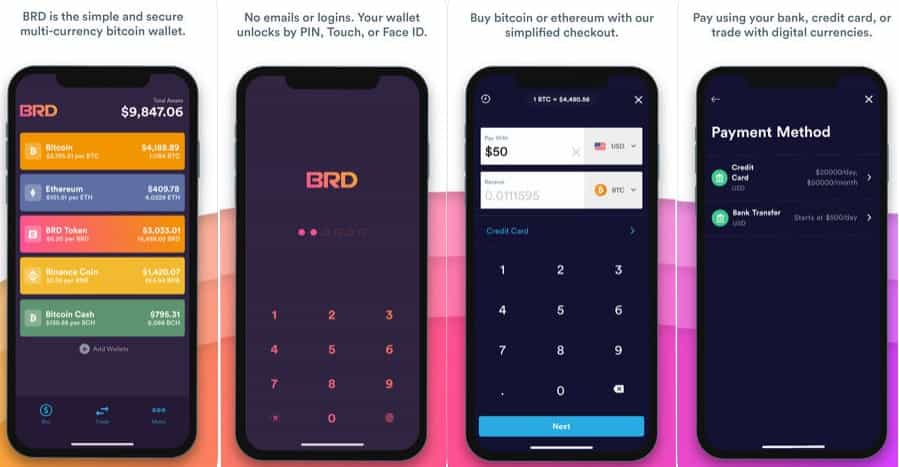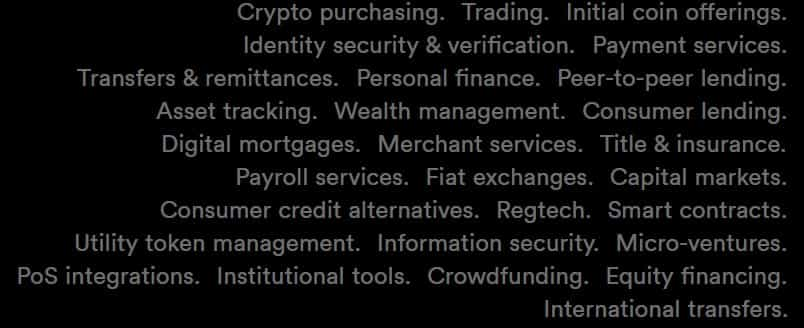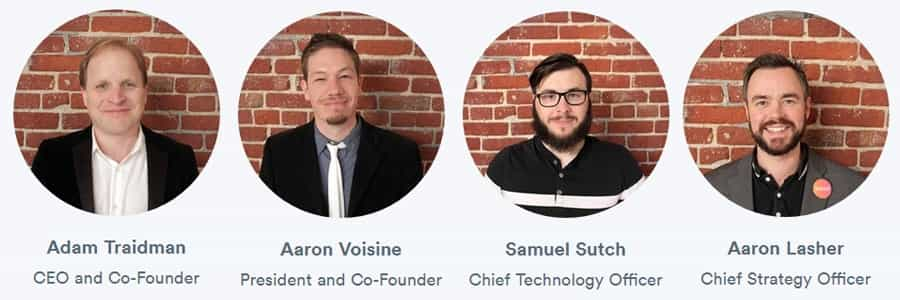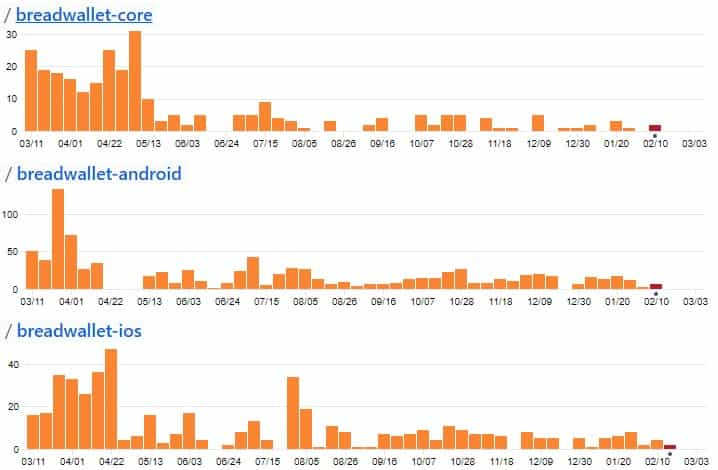Bread (BRD) Review: Rewards Tokens of the Bread Wallet
Bread (BRD) has been getting quite a bit of attention recently which has seen the bread wallet expand to 2m users in over 170 countries.
This rewards based cryptocurrency allows users to get discounts and additional services by spending with the token. This incentives them to remain within Bread’s ecosystem. Bread is also well known for being one of the earliest projects that completed an ICO on the Binance Launchpad.
However, is the project really all it is hyped up to be?
In this review of Bread, we will take an in-depth look into the project including its technology, development and upcoming roadmap. We will also analyse the potential long term use cases and mass market adoption of the BRD token.
The Bread Wallet
We can’t discuss the BRD token without talking about the Bread wallet. This is a mobile cryptocurrency wallet available for both Android and iOS as a free download. Personal information remains in your control as the wallet doesn’t require any personal information to download or setup.
Users can import existing wallets, or they can create a new one. If a new wallet is created you will receive a 12 word mnemonic seed phrase that can be used later to restore your wallet if something happens to your mobile device. The private keys generated by the wallet remain only on your device so you won’t have to worry about Bread getting hacked and losing your coins.

The user interface for the Bread wallet is easy to use, with clear options for sending and receiving coins. In some countries you’ll also have the ability to buy Bitcoin right from the wallet.
The wallet lets you choose how fast you want your transaction to go through by offering both “normal” and “economy” network fees. The regular fees typically see transactions confirmed within 1 hour, while the economy fees can see transactions take up to 24 hours to be confirmed.
Bread wallet isn’t an ideal choice for long-term storage of large amounts of Bitcoin or other supported altcoins because it is a hot wallet. That means it’s always connected to the internet, making it more vulnerable to attack. Bread wallet is good for everyday transactions, and for frequent movement of coins.
Bread - Decentralized Bank
Bread isn’t just interested in being a cryptocurrency wallet with its own loyalty token. Ultimately they plan on creating a decentralized bank, which is a very ambitious goal. With Bread as the facilitator for the services being offered, Bread is partnering with global financial service institutions to provide a variety of services.
They already allow users to buy Bitcoin through the wallet with credit cards, bank accounts and in-person. Future services will include direct deposit of wages in Bitcoin, buying and selling a larger variety of tokens, bill payment, tracking of investment returns and more. Bread wants to transition users away from traditional centralized banking and into the new world of decentralized banking where users retain control.

Bread has taken a unique approach to this by partnering with existing financial institutions in each country. This saves the time and expense of Bread becoming legally compliant in each country.
Instead Bread works with local partners.
So, if you open your Bread wallet in Singapore you’ll have the local Singaporean services and exchanges which are already legally compliant to serve Singaporean customers. If you travel to Italy and open your Bread wallet you’ll now see services and exchanges that are legally compliant in Italy.
Daily and monthly purchase limits of Bitcoin will vary based on what jurisdiction you’re in, but in some countries you can purchase up to $20,000 of BTC per day, and up to $50,000 per month. Note that when purchasing Bitcoin you may have to provide additional personal information.
Currently the Bread website lists more than two dozen use cases being considered. These are:

As I mentioned before it is a very ambitious idea of creating a decentralized banking ecosystem. So far only the first three items on the list have been included in the Bread wallet app. If the team can bring all of these other features together there would be a massive number of uses for the BRD token, and it should become extremely valuable.
What is the BRD Token?
The BRD token was released in December 2017, and it works in a similar manner to the Binance Coin (BNB) which gives Binance users discounts on their transaction fees. In the case of the BRD token, it gives users discounts on the services within the Bread wallet.
For example, if there is a $10 fee for buying Bitcoin through the wallet, a user might be able to lower that fee to $5 by using BRD tokens. Future plans are to include a dividend for the BRD token, so users will be incentivized to simply hold the BRD token.
Typically customer loyalty programs continue rewarding you with points, and as your points grow you become eligible for greater rewards. That isn’t possible with BRD because of the fixed supply of the token, which will eventually make it all but impossible to earn the rewards at the highest levels. Bread has a “Rewards Waterfall” concept to solve this issue in which users gain access to higher tiers of rewards by holding a larger number of BRD tokens in their wallets.
The plan is to unlock more tiers as the BRD token becomes increasingly harder to acquire. One reward already released was the elimination of Bitcoin purchase fees for a month. Another suggested feature is access to telephone based customer service, which is something nearly unheard of in the cryptocurrency space.
As mentioned, the BRD raise was one of the first to be completed on Binance's newly developed launchpad. There are certain criteria that a project must complete before they can raise on this platform which adds weight to the project. There have been a number of other projects that have raised on the Binance Launchpad including BitTorrent (BTT) and Fetch.ai (FET).
Bread Team
Bread was initially released in 2015 as Breadwallet. It was created by Aaron Voisine and Adam Traidman and was the first standalone Bitcoin wallet for the iOS operating system. From its humble beginnings Bread has grown to 42 employees and continues hiring despite the drawn-out bear market in cryptocurrencies.
Adam Traidman remains at Bread as the CEO. Prior to launching Breadwallet he co-founded the wearables company WearSens. Aaron Voisine remains at Bread as the President. Prior to Breadwallet he was the co-founder of Lightt, where he was instrumental in the early design of the iOS video app.

One of the top advisors for the Bread wallet is Charlie Lee, the creator of Litecoin. It’s interesting to note that the Litecoin team has taken the open-source Bread code and forked it into a Litecoin wallet called LoafWallet. While there is no Loaf token yet, it wouldn’t be a surprise given Litecoin’s focus on becoming a payment coin, and the high transaction volume the network is capable of delivering.
Future plans that the team has on their radar is allowing the sale of Bitcoin and altcoins through the Bread wallet.
Development
One of the best ways to determine how much work is being done on a project is through their GitHub. This will give you an idea of how much code is being pushed into their repositories and hence how the project is coming along.
Something that we really liked about the Bread Wallet is that it is fully open source. This means that their code is constantly being vetted by the community and hence further strengthened. Moreover, it allows us to dig into their commits and see the amount of work that is being done.

As you can see from their three most active GitHub repos, development is taking place at a break neck pace. There are regular commits and the project has another 16 repositories in total. This further adds weight to the reputability of the Bread ecosystem and the team that is working on it.
BRD Token History
The BRD token ICO was held in December 2017, and the team raised $32 million in just 90 minutes. Tokens were sold at 900 BRD = 1 ETH, or $0.8055 per BRD. There is a total supply of 88,862,718 BRD. That supply is fixed and will never increase.
The BRD token hit an all-time high of $3.44 on January 6, 2018 and has been sliding lower ever since as the bear market in cryptocurrency has kept nearly all cryptocurrencies depressed since early 2018. As of early March 2019 the BRD token has climbed off its lows, but it remains extremely depressed around the $0.20 range, or just 25% of the ICO price.

If you’d like to buy some BRD tokens the only exchange where they are available is Binance.
BRD is an ERC-20 token, so in addition to storing them in the Bread wallet, you can also store them in any ERC-20 compatible wallet such as MyEtherWallet or Metamask.
Conclusion
The goal of building a decentralized bank is ambitious to say the least. And in looking at the progress made so far it could take decades for Bread to realize their goal, especially since the decentralized bank they are looking to build will be a global system. This is going to take an immense number of partnerships and coordination.
Those already using the Bread wallet app to store their Bitcoin or other coins might benefit from picking up some BRD tokens, just to be sure they can take advantage of any discounts or savings on services.
As an investment the token has been dismal so far, but if it has utility because of wallet usage it could be worth holding, especially if the Bread team adds a dividend-like feature to the token.
Disclaimer: These are the writer’s opinions and should not be considered investment advice. Readers should do their own research.
